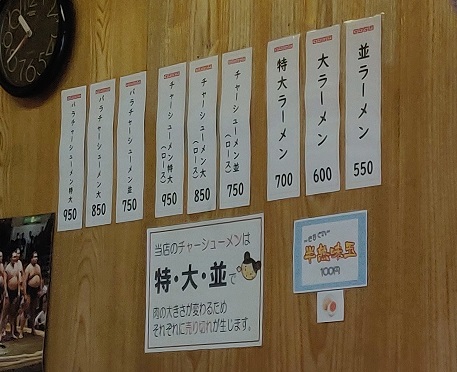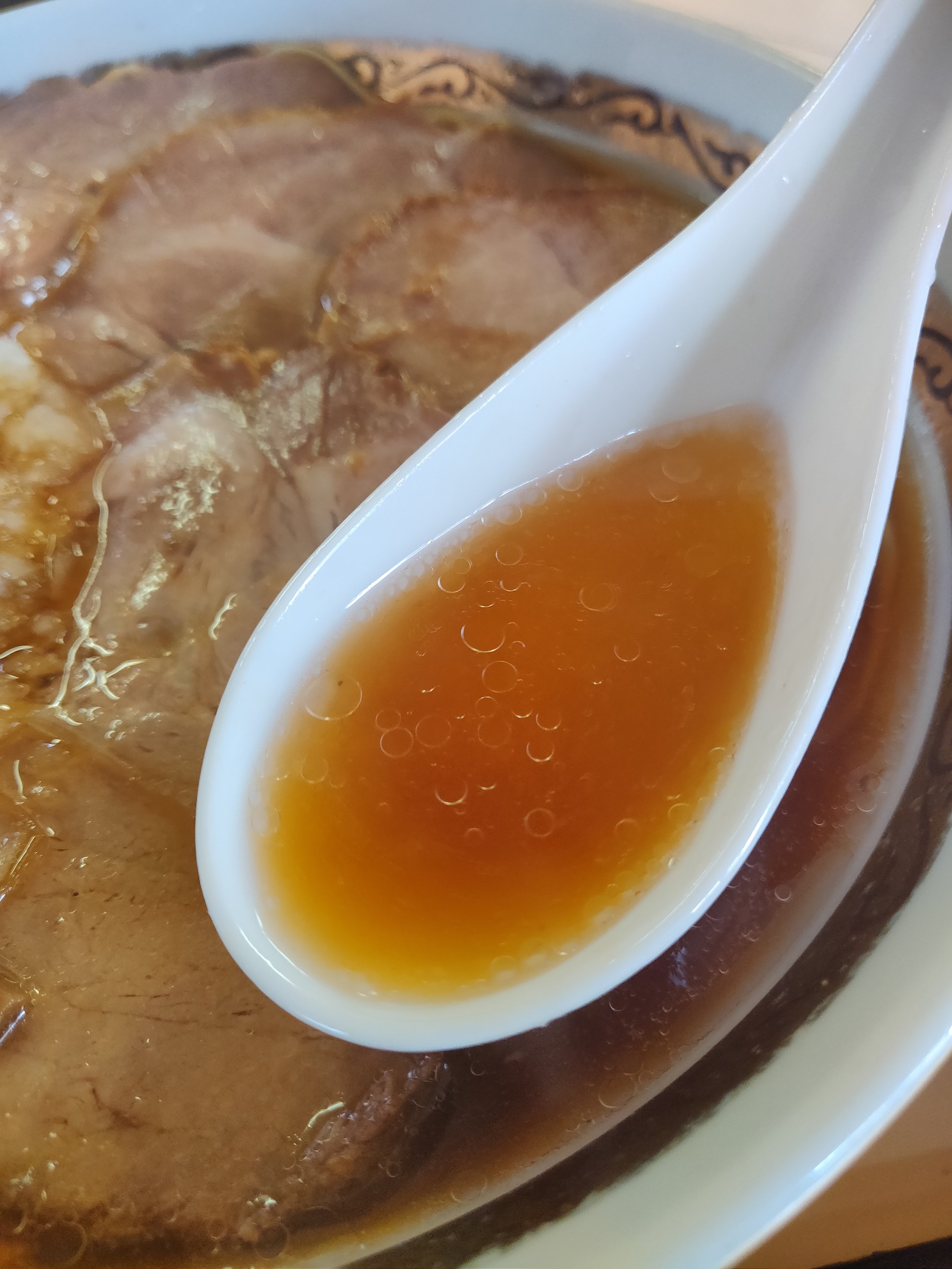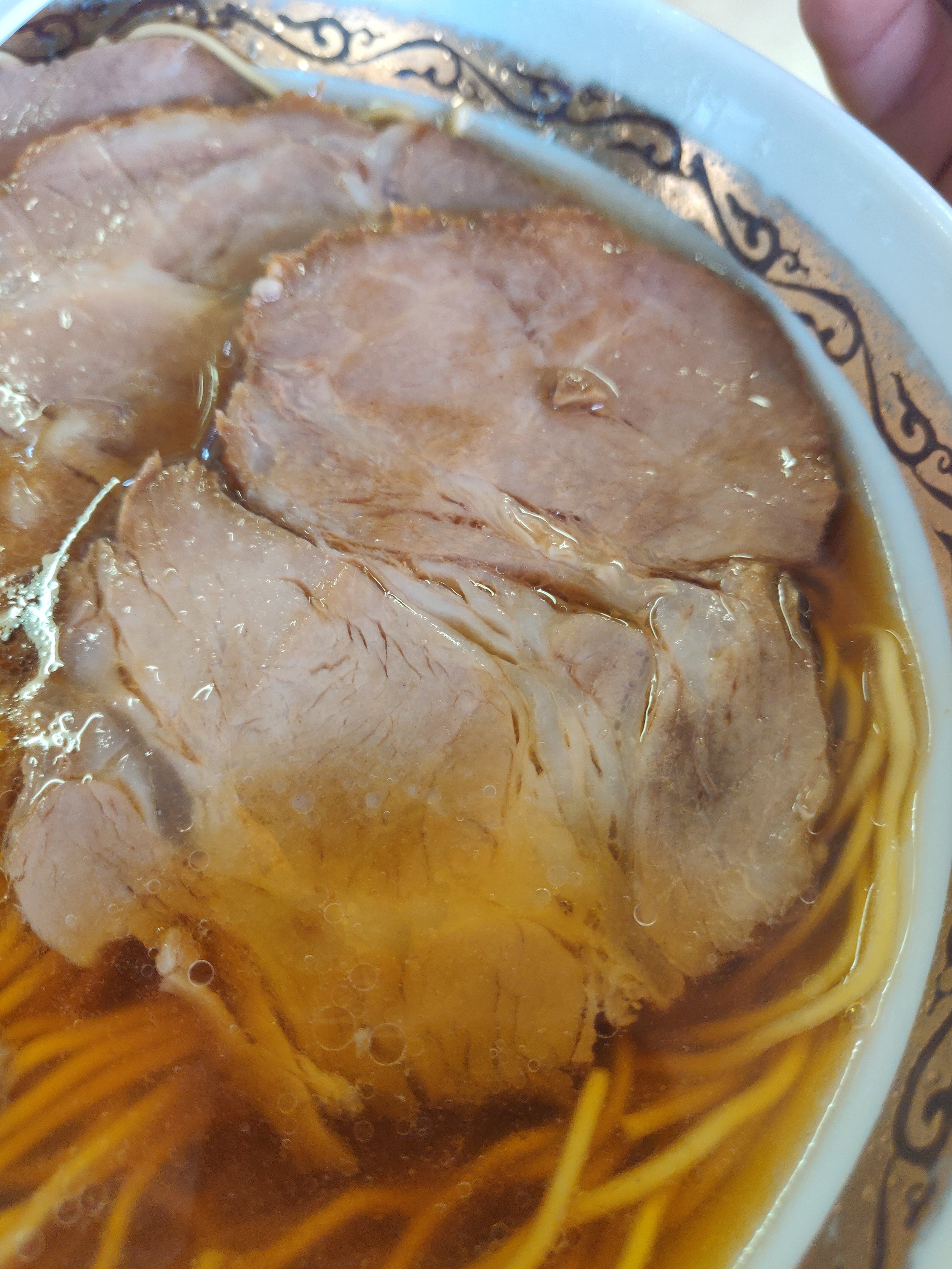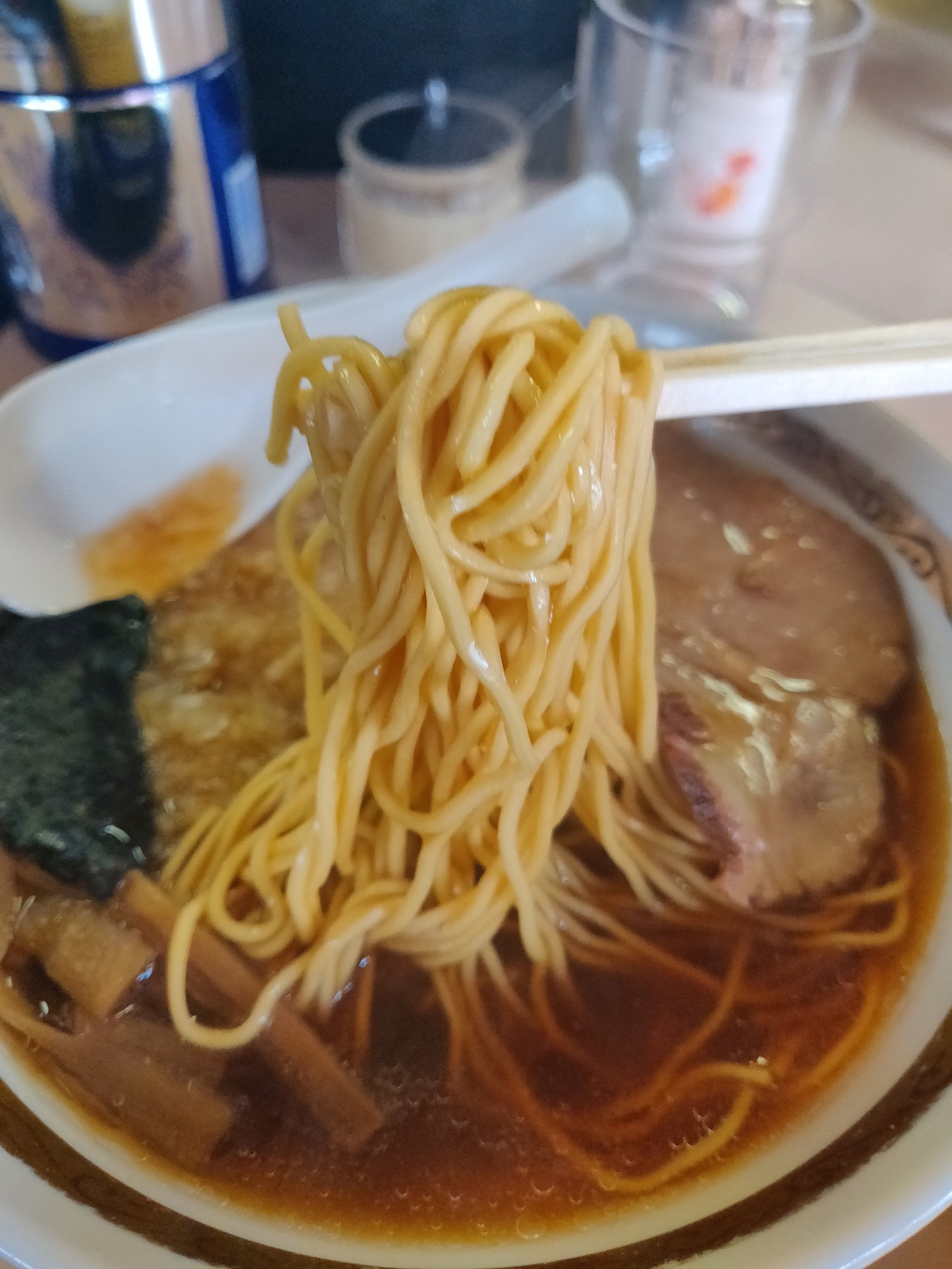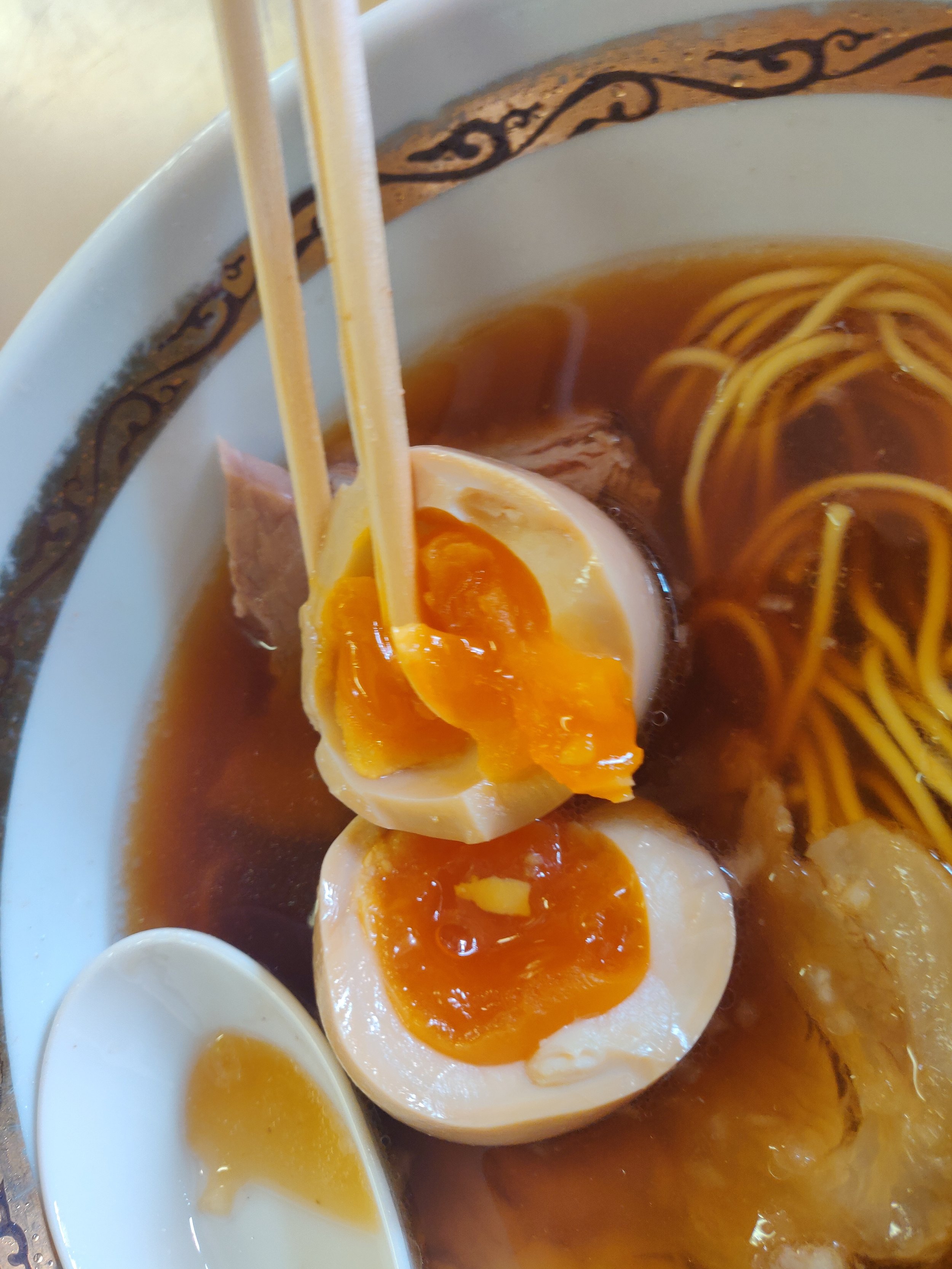Tantan (タンタン); Traditional Hachioji Ramen, Hachioji
Despite the name, Tantan in Hachioji does not serve tantanmen. In actuality, Tantan is one of the best traditional Hachioji style ramen in Tokyo. The shop is located on the south side of the JR Hachioji station which is about 45 minutes on the Chuo line from Shinjuku station. Once you exit towards the south, walk straight across the river until you reach a main road and take a left. You should see the shop immediately, as well as a line up front. The shop is only open on weekdays from 11:00-14:30 so be prepared to save a weekday for a bowl. Tantan is probably the most popular ramen shop in Hachioji and lines will start by 10:15 so be prepared for a long wait if you come past 11. On my particular visit, I came at 10:30 and I was the last person seated before they began serving their ramen. They do allow you to wait inside until 11:00 so take a peek inside for an open seat if you end up coming early.
The menu here is simple. You choose the size of the ramen, what type of pork char siu you’d like, and how much of the pork char siu you’d like. They do not have an English menu so be sure to jot down these translations or have wifi ready and pull up this review when its time to order. So from right to left, you have Nami Ramen, or regular ramen for 550 yen, Dai Ramen, or large ramen for 600 yen, and Tokudai Ramen, or extra large ramen, for 700 yen. Next three are the Char Siu Ramen (Pork Loin Char Siu) for 750 yen, Char Siu Dai, large char siu ramen, for 850 yen, and Char Siu Tokudai, extra large char siu ramen, for 950 yen. Next three are the pork belly char siu versions, called Bara Char Siu Ramen, from regular to extra large with the same prices as the pork loin versions. You can add a side of soft boiled egg, or Hanjyuku Tamago, for 100 yen more. Hachioji Ramen is famous for diced onions in your bowl and if you’d like extra for free, just ask for “Tamanegi Oome”.
I opted for the Regular Char Siu Ramen with a side of egg for a total of 850 yen. As you can see from the photo, my bowl came with my extra char siu slices in addition to the diced onions, menma bamboo shoots, and dried seaweed. The ramen you see here is the epitome of a Hachioji style ramen. Soup is a basic pork and chicken broth with a Shoyu tare seasoning. Tantan uses a bit of fish to add some umami, but not enough where you can taste a fishy flavor. I really enjoyed the soup here because of how traditional the flavors are. It really is a simple Tokyo style ramen, but with the addition of the minced onions to make it distinctly Hachioji. You get the roasted notes from the Shoyu, with the depth and fattiness of the pork and chicken. It isn’t overly oily, but as you can see from the photo, has enough where your mouth is coated with subtle chicken oils with every spoonful. The menma bamboo shoots are made in house and has a nice smoky flavor from the saute process. Cooked perfectly, the menma has a nice crunchy exterior with a soft center. The minced onions adds both a sweetness and a tang to the ramen. While you have the pungent bitterness onions usually have, the Japanese sweet onions adds a sugary touch.
The highlight here is definitely the char siu. I opted for the loin version as I didn’t want anything too fatty in my ramen and I enjoyed the meatiness it provided to the ramen. It has enough structure so it doesn’t melt in to the soup, but also tender enough that you have no trouble biting through each slice. The flavors are light, but still very noticeable. Marinade consists of a light soy base with a bit of peppery aftertaste. The cost performance for upgrading to the Char Siu Ramen is phenomenal going from one slice to four with just a 200 yen price change. The dried, roasted seaweed is nothing special, pretty simple and basic, but the egg was surprisingly well prepared. Served cold on the side, I liked that it wasn’t put directly in to my bowl to overcook. As you might know, I like my soft boiled egg to be cooked just enough for the whites to be solid, but yolk still orange and a bit runny. Flavored in the same marinade as the char siu, it had a nice pork fat flavor while maintaining its’ egg characteristics. Noodles here are made by a third party and its your typical thin, straight noodles you might find at other Tokyo style ramen shops. It works great with the bowl as it doesn’t overpower the soup, but its nothing to phone home about.
All in all if you’re a ramen fanatic, Tantan is definitely worth making a visit for. Hachioji style ramen isn’t the most famous variety, but one that most fanatics will rave about…and Tantan is likely the one they will recommend. Be aware though that this is a ridiculously famous and popular ramen restaurant. The queues will reflect its popularity so be mindful of the wait time. Both locals and enthusiasts from all around Japan will flock to their shop early so take this as your warning. If you do end up coming to Tantan, be sure to check out Motsuke as well. Located just a ten minute walk away, Motsuke has some quality Tantanmen thats worth checking out. Like always, be sure to let me know on Instagram, Twitter, Facebook, or right here in the comments section what you thought about the bowl here.

